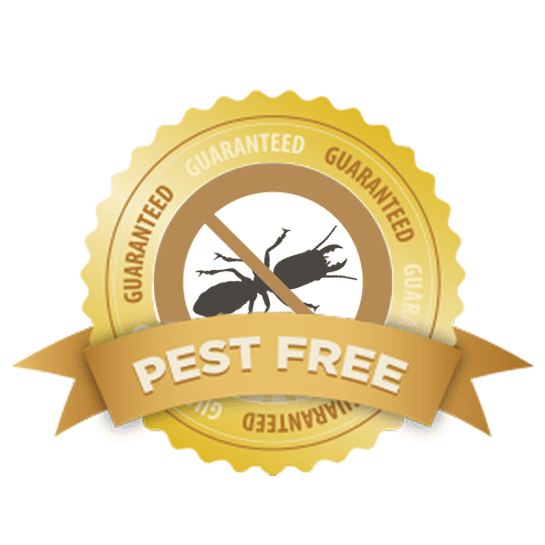Expert A1 Charlotte Bed Bug Exterminator - High Quality Service Guaranteed
Expert A1 Charlotte Bed Bug Exterminator - High Quality Service Guaranteed
Blog Article
Bed Pest Treatment Malfunction: Comparing Chemical Vs. Non-Chemical Solutions
In the realm of bug control, especially when taking care of the persistent problem of bed pests, the selection between chemical and non-chemical treatment remedies can be an essential one. Both approaches use distinctive advantages and downsides, influencing aspects such as effectiveness, security factors to consider, and general cost. By checking out the nuanced details of each approach, a clearer understanding of which path to seek in dealing with a bed pest invasion can be obtained.
Effectiveness of Chemical Treatments
Chemical therapies for bed bug invasions have been widely recognized for their potent and rapid effectiveness in getting rid of these insects. When thinking about the efficiency of chemical treatments, it is important to comprehend that they can supply a comprehensive and fast remedy to a bed pest trouble.
In addition, chemical treatments have the advantage of providing residual impacts, implying that they can continue to eliminate bed insects even after the initial application. This recurring action is particularly beneficial in combating any potential re-infestations. Furthermore, the quick action of chemical therapies can bring relief to individuals encountering serious bed bug problems, enabling them to restore control of their living spaces promptly.
Security Worry About Chemical Solutions
One critical element that calls for cautious factor to consider when making use of chemical solutions for bed insect therapy is guaranteeing the safety and security of owners and the setting. While chemical therapies can be effective in eradicating bed insects, they might present threats if not dealt with effectively. Among the main safety and security worry about chemical services is the possible harm they can cause to human health. Exposure to specific chemicals made use of in bed pest treatments can result in respiratory system concerns, skin irritability, or various other unfavorable responses, particularly in people with pre-existing problems or level of sensitivities. In addition, improper application or dosage of chemical pesticides can cause hazardous deposits sticking around in the cured area, posturing lasting wellness risks to residents.
Furthermore, the ecological effect of chemical options is one more significant consideration. Some chemicals made use of in bed insect treatments may be hazardous to advantageous insects, wild animals, and communities if they leach right into the soil or water supply. It is vital to make use of chemical treatments judiciously, adhering to security standards, and thinking about less toxic options to reduce these threats and ensure the safe and effective administration of bed bug problems.
Advantages of Non-Chemical Approaches
Considering the potential security worries and ecological influence associated with chemical services for bed insect treatment, exploring non-chemical approaches offers an encouraging choice with numerous unique benefits. Non-chemical therapies are ecologically pleasant, as they do not add to air or water pollution, making them a sustainable selection for parasite control.
Additionally, non-chemical options can be reliable in targeting bed pests, including hard-to-reach areas where chemical therapies might not penetrate - A1 exterminators charlotte nc. Approaches such as warm treatment, vacuuming, vapor cleaning, and mattress coverings provide thorough eradication without the usage of hazardous chemicals.
Limitations of Non-Chemical Treatments

Additionally, non-chemical treatments frequently need several applications to achieve successful removal. This can be time-consuming and might not constantly guarantee full elimination of all bed bugs and their eggs, particularly in hard-to-reach or surprise locations.
Furthermore, the success of non-chemical treatments heavily depends on proper application and thoroughness, which can be challenging for individuals without specialist expertise. Inadequate application of non-chemical methods may result in insufficient obliteration, bring about relentless problems and the demand for added treatments.
For that reason, while non-chemical treatments have their benefits, it is important to recognize these restrictions and consider them when identifying the most reliable approach for taking care of bed insect infestations.
Expense Contrast: Chemical Vs. Non-Chemical Options
Offered the constraints associated with non-chemical treatments, a crucial aspect to assess in the context of bed insect monitoring is the cost comparison between chemical and non-chemical choices. In comparison, non-chemical therapies like warmth Check This Out therapy or steam can be extra costly, with costs ranging from $1,000 to $6,000 for a whole home. While the initial price of chemical treatments may appear lower, numerous treatments might be required to fully eliminate the infestation, possibly raising the overall expense.
Final Thought

Thinking about the possible safety issues and ecological influence associated with chemical options for bed pest therapy, exploring non-chemical techniques offers an encouraging alternative with a number of unique advantages.Given the constraints associated with non-chemical treatments, a crucial aspect to evaluate in the context of bed insect management is the price comparison in between chemical and non-chemical alternatives. In comparison, non-chemical therapies like heat treatment or heavy steam can be much more expensive, with expenses ranging from $1,000 to $6,000 for a whole home. While the preliminary expense of chemical treatments might seem reduced, numerous therapies might be called for to totally get rid of the problem, possibly raising the total price.In verdict, when contrasting chemical and non-chemical bed pest therapy choices, it is necessary to take into consideration performance, safety and security, advantages, visit this page restrictions, and expense.
Report this page